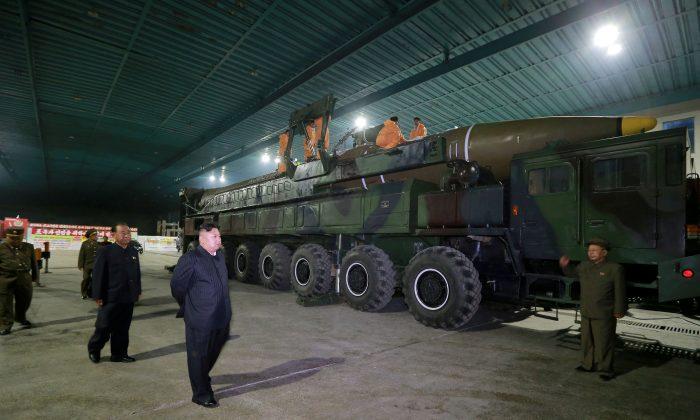WASHINGTON—The U.S. military has increased spending for a secret research effort to use artificial intelligence to anticipate the launch of a nuclear-capable missile, as well as track and target mobile launchers in North Korea and elsewhere.
The effort has gone largely unreported, and the few publicly available details about it are buried under a layer of near impenetrable jargon in the latest Pentagon budget. But U.S. officials familiar with the research told Reuters there are multiple classified programs now under way to explore how to develop AI-driven systems to better protect the United States against a potential nuclear missile strike.
If the research is successful, such computer systems would be able to think for themselves, scouring huge amounts of data, including satellite imagery, with a speed and accuracy beyond the capability of humans, to look for signs of preparation for a missile launch, according to more than half a dozen sources. The sources included U.S. officials who spoke on the condition of anonymity because the research is classified.
With adequate warning, the U.S. government would be able to pursue diplomatic options. In the case of an attack, the military would have more time to destroy the missiles before they were launched, or try to intercept them.
“We should be doing everything in our power to find that missile before they launch it and make it increasingly harder to get it off [the ground],” one of the officials said.
The Trump administration has proposed more than tripling funding in next year’s budget to $83 million for just one of the AI-driven missile programs, according to several U.S. officials and budget documents.

While the amount is still relatively small, it is one indicator of the growing importance of the research on AI-powered anti-missile systems at a time when the United States faces a more militarily assertive Russia and a lingering threat from North Korea.
“What AI and machine learning allows you to do is find the needle in the haystack,” said Bob Work, a champion of AI technology who was deputy defense secretary until last July. He wasn’t referring to any individual project.
One person familiar with the programs said it includes a pilot project focused on North Korea. Washington has been concerned about Pyongyang’s development of mobile missiles that can be hidden in tunnels, forests, and caves.
While that project has been kept secret, the military has been clear about its interest in AI. The Pentagon, for example, has disclosed it is using AI to identify objects from video gathered in its drone program as part of a publicly touted effort launched last year called “Project Maven.”
Still, some U.S. officials say AI spending overall on military programs remains woefully inadequate.
The Pentagon is in a race against China and Russia to infuse more AI into its war machine, to create more sophisticated autonomous systems that are able to learn by themselves to carry out specific tasks. The Pentagon research on using AI to identify potential missile threats and track mobile launchers is in its infancy and is just one part of that overall effort.
There are scant details on the AI missile research, but one U.S. official told Reuters that an early prototype of a system to track mobile missile launchers was already being tested within the U.S. military.
Although some officials believe elements of the AI missile program could become viable in the early 2020s, others in the U.S. government and the U.S. Congress fear research efforts are too limited.
“The Russians and the Chinese are definitely pursuing these sorts of things,” Rep. Mac Thornberry (R-Texas), chairman of the House Armed Services Committee, told Reuters. “Probably with greater effort in some ways than we have.”






Friends Read Free